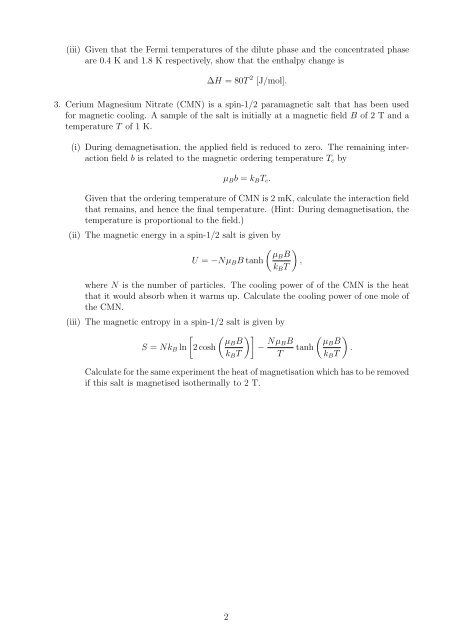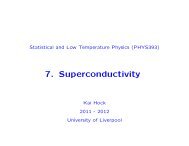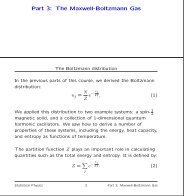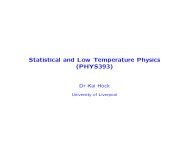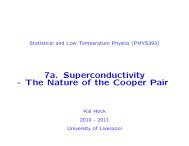PHYS393: Statistical and Low Temperature Physics Tutorial 4
PHYS393: Statistical and Low Temperature Physics Tutorial 4
PHYS393: Statistical and Low Temperature Physics Tutorial 4
You also want an ePaper? Increase the reach of your titles
YUMPU automatically turns print PDFs into web optimized ePapers that Google loves.
(iii) Given that the Fermi temperatures of the dilute phase <strong>and</strong> the concentrated phase<br />
are 0.4 K <strong>and</strong> 1.8 K respectively, show that the enthalpy change is<br />
∆H = 80T 2 [J/mol].<br />
3. Cerium Magnesium Nitrate (CMN) is a spin-1/2 paramagnetic salt that has been used<br />
for magnetic cooling. A sample of the salt is initially at a magnetic field B of 2 T <strong>and</strong> a<br />
temperature T of 1 K.<br />
(i) During demagnetisation, the applied field is reduced to zero. The remaining interaction<br />
field b is related to the magnetic ordering temperature Tc by<br />
µBb = kBTc.<br />
Given that the ordering temperature of CMN is 2 mK, calculate the interaction field<br />
that remains, <strong>and</strong> hence the final temperature. (Hint: During demagnetisation, the<br />
temperature is proportional to the field.)<br />
(ii) The magnetic energy in a spin-1/2 salt is given by<br />
U = −NµBB tanh<br />
µBB<br />
kBT<br />
where N is the number of particles. The cooling power of of the CMN is the heat<br />
that it would absorb when it warms up. Calculate the cooling power of one mole of<br />
the CMN.<br />
(iii) The magnetic entropy in a spin-1/2 salt is given by<br />
<br />
µBB<br />
S = NkB ln 2 cosh −<br />
kBT<br />
NµBB<br />
T<br />
<br />
,<br />
tanh<br />
<br />
µBB<br />
.<br />
kBT<br />
Calculate for the same experiment the heat of magnetisation which has to be removed<br />
if this salt is magnetised isothermally to 2 T.<br />
2


